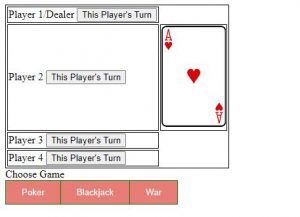This week, I have been working with Jeremy on developing ML code and testing our models. Since I finished writing code to train and test a SVM model (with an RBF kernel), Jeremy was able to train and test this model on a limited dataset. We do not have enough training data, so we achieved very low validation accuracies. The fact that our training accuracy was high further proved that our training data is not comprehensive enough. Since my quarantine is ending soon and my symptoms have gotten better, I plan to go into the lab in person and obtain more card image data to use for training. This is one of my primary goals in the coming week, as we need to achieve higher classification accuracy for whichever model we choose (SVM vs neural network).
I have also started writing Python code on configuring a neural network. This has required interfacing with the PyTorch library. I plan to have the code finished by next week as per schedule. However, training the neural network will require even more training data than the SVM since neural networks don’t make modeling assumptions about the underlying data. As a result, finishing the neural network implementation is not as immediately pressing as obtaining training data.
I have also achieved considerable progress in making the web application more robust, intuitive, and accurate. To make it more accurate, I had to fix several logic bugs to ensure the card dealing order remained correct and the proper winner is determined at the end of Blackjack and War. I also added the following features: allowing the user to input player names, showcasing which player’s turn it is, highlighting the losers and winners of Blackjack and War, and implementing a sticky left column in our player table so that it remains constant when the user scrolls horizontally. This last feature is especially important in War, as there are up to 52 cards in a player’s hand, so users would need to scroll horizontally to view all the player’s cards. Lastly, I added some CSS styling to make the UI more elegant. In terms of UI styling, there is not much I need to do for the web app. With regard to next steps, I recently realized I need to implement the necessary logic for Blackjack in case there are multiple winners. In addition, I need to be able to handle empty and faulty user input from web app users (ex: inputting a negative number of players). This error handling is another one of my minor goals for the coming week. The feature I want to prioritize for next week, however, is implementing authentication in our web application to ensure only verified users can make changes to the web app. In a real-life professional poker setting, only casino officials and tournament officials should be able to input information into the web app (not audience members), so this level of security is necessary.
Overall, I am on schedule with my tasks. Below is an updated look at the web app (the password text field does not have any underlying logic yet, but I will work on that this week).







